Taurus (Torus) // Collaborative Workflows
The following blog post will outline our methodology for optimizing collaboration in our studio project, a sports and recreation facility on the moon. Our workflow has been divided into three different phases, separated into Initial Concept Design, Design Development, and Production. For each phase and for the overall project, we define the inputs and desired outputs/outcomes.
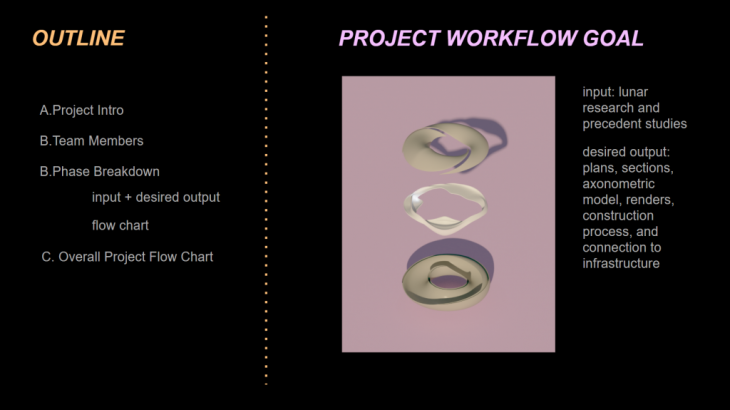
The image below describes the project team and the role each member took on during the project.

Phase 01
Phase 1 was a particularly individualized workflow with each designer exploring their own interpretation of the brief – bringing the results of their exploration back – and the group engaging in a discussion on the conceptual formal and programmatic direction of the project. Successful ideas were carried and further explored into the next week. This process allowed each team member to explore and interpret the ideas from the week before our own way, allowing different perspectives to engage and meld together. Miro was the primary sharing tool in this stage . We began by simply posting articles, precedent images – which then lead to hand sketches and finally once we reached a point where we felt the concept and formal direction had been solidified we moved into phase 2 and began working from a central rhino model. The resulting output from this phase was an initial concept roughly modelled out in Rhino.

Phase 02
Phase 2 started from the conceptual model as an input and saw the parsing of roles for the designers. The interior and exterior models became two very distinct workflows, however each informed how the other performed. We regularly sent updates into the central model, where we could see conflicts and would make a group decision on how to proceed. As the phase progressed it also became apparent that a construction/material methodology model was needed. Parameters of this were also sent back to the central model to see how it would inform the exterior form and interior spatial conditions. The resulting output was the design development model, including details and fabrication. 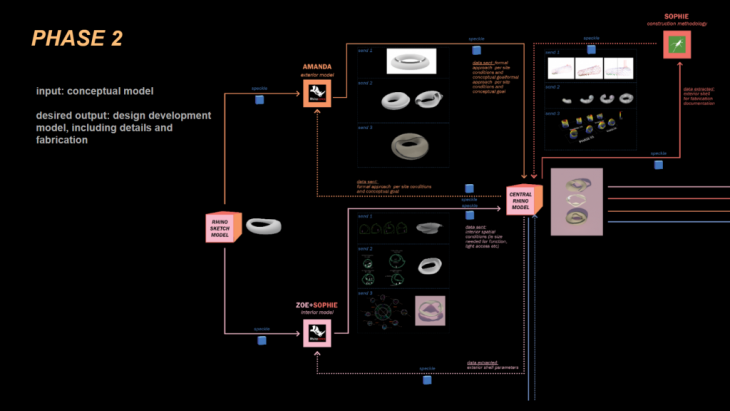
Phase 02 also included external communication with the infrastructure group. In this stage each team sent the exterior form of each individual module and in return we each received a site model, connecting all modules with infrastructure and services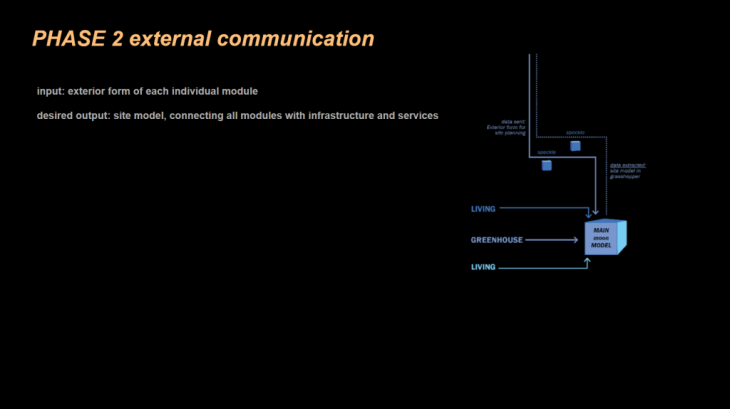
Phase 03
In phase 3, roles for production were completely separate with data being extracted from the final version of the central model. The workflow was very linear at this stage with collaboration required only at the end to discuss bringing everything together into a shared google slides presentation.
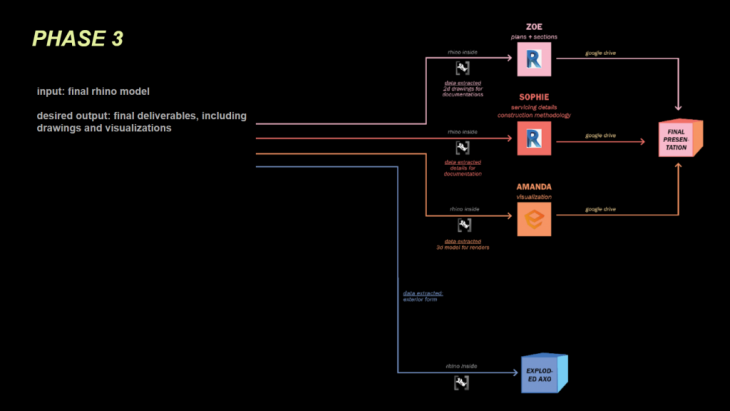
Overview
The following is a zoomed out view of the workflow for all the phases. To briefly to summarize:
- Phase 01 was a fairly linear workflow consisting of mostly individual research, sketches, and preliminary rhino modelling.
- Phases 02 was the most iterative, requiring the most back and forth between members of the group and between members of others groups.
- Phase 03 , the production phase, saw less collaboration and more individual work being completed.
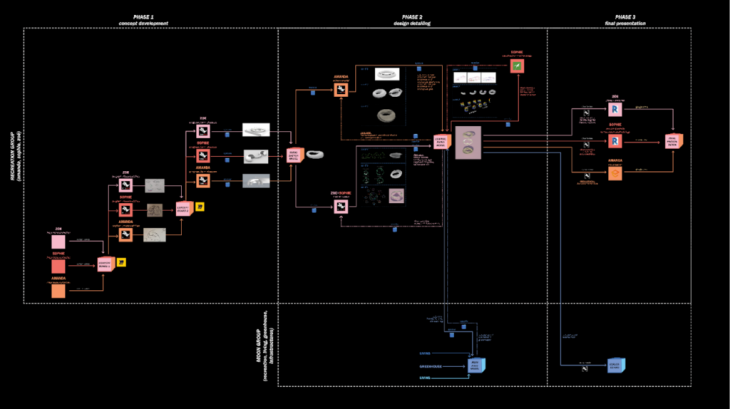
Credits
Taurus (Torus) // Collaborative Workflows is a project of IAAC, Institute for Advanced Architecture of Catalonia developed in the Master of Advanced Computation in Architecture and Design 2021/22 by
Students: Amanda Gioia, Zoe Lewis, and Sophie Moore
Faculty: Alan Rynne and Joao Silva